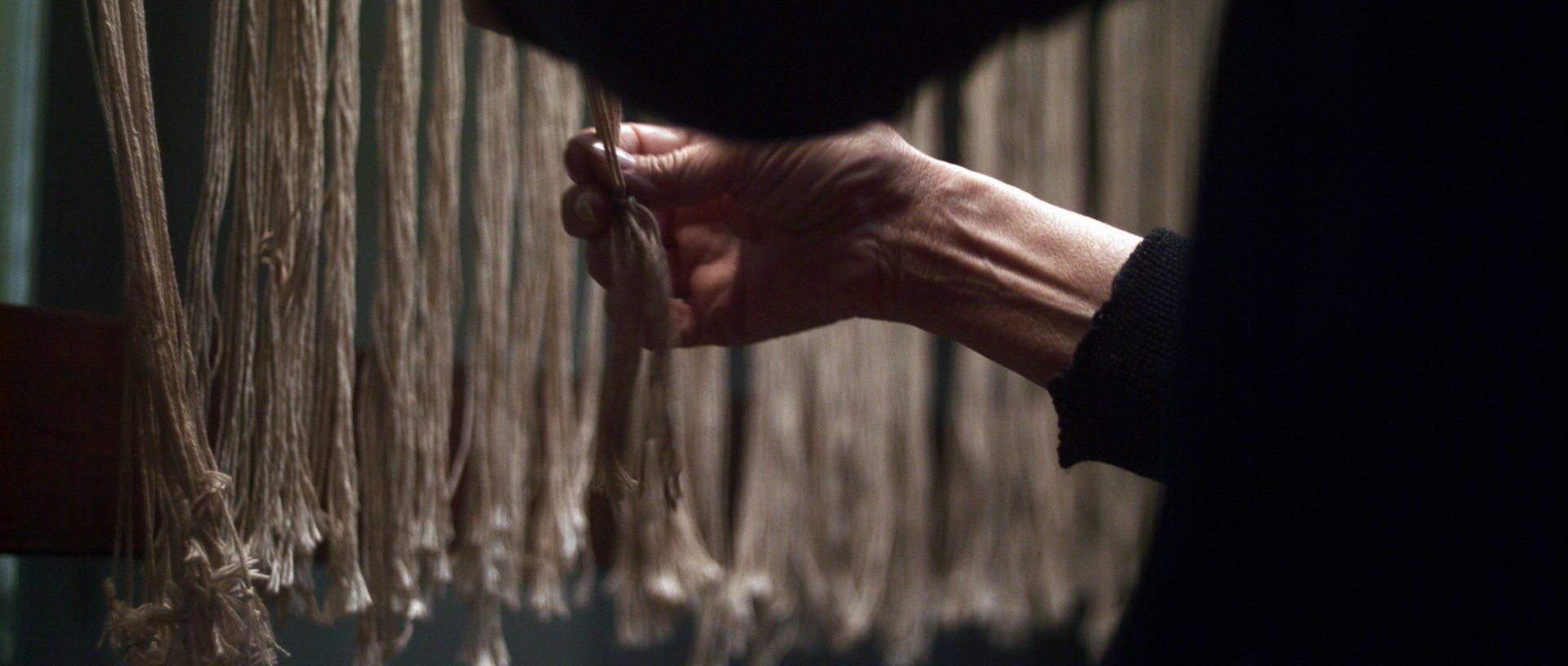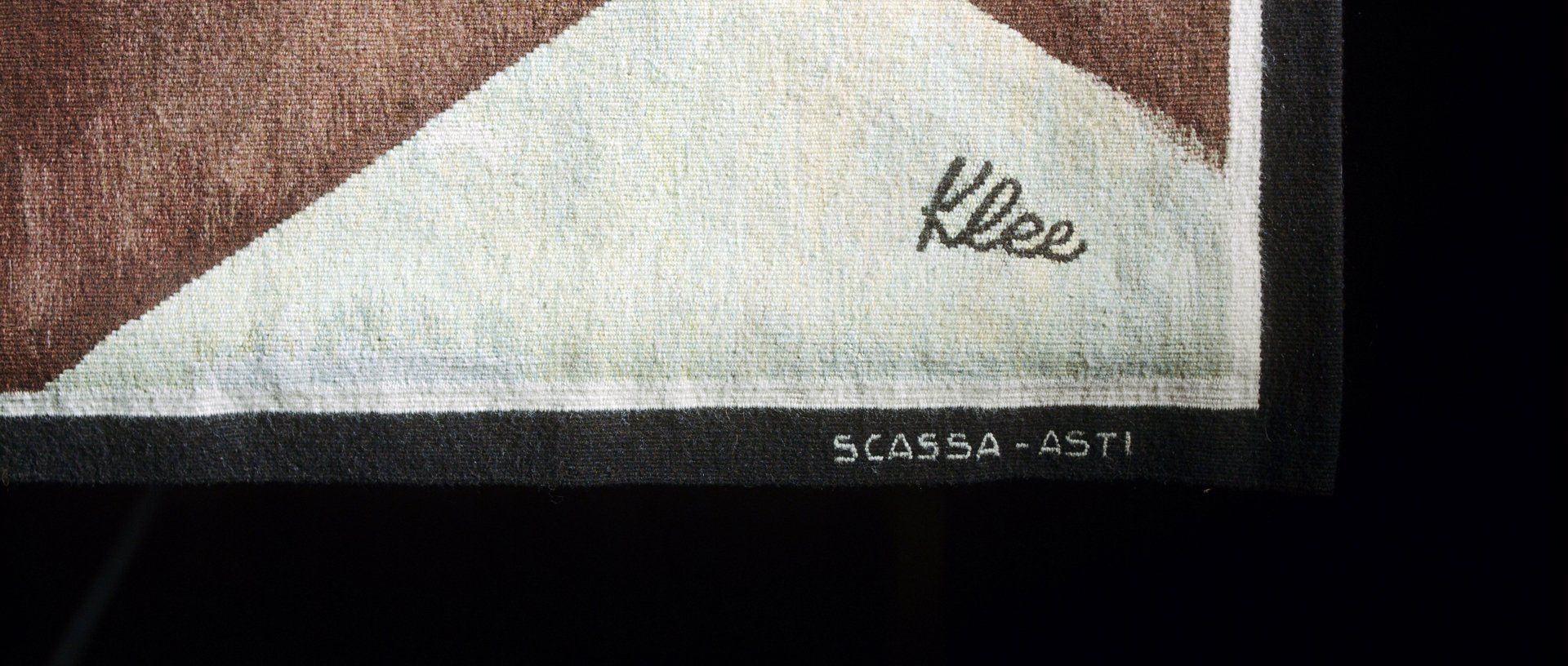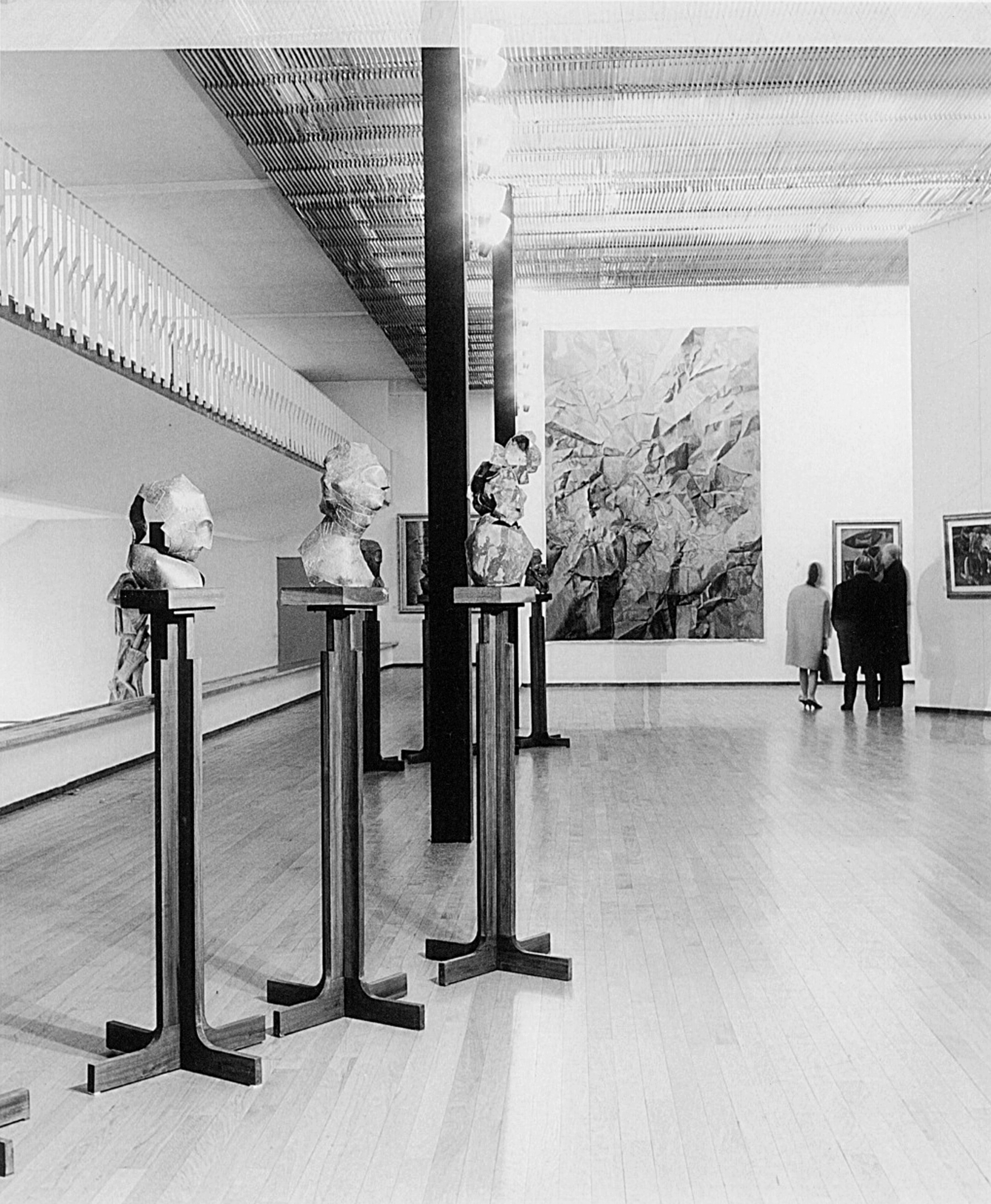"This woolen wall, which is the tapestry, can be detached from the wall, wrapped, put quietly under the arm, and hung elsewhere."
Le Corbusier, Muralnomad, Premiére Biennale Internationale de la Tapisserie, exhibition catalog (Lausanne, Musée Cantonal des Beaux-Arts, June 16 - September 17, 1962), CITAM and Musée Cantonal des Beaux-Arts, Lausanne 1962
L'Arazzeria
Scassa tapestry
Founded in Asti in 1957 by Ugo Scassa, Arazzeria Scassa is today one of the most important tapestry ateliers in the world. Today, just like yesterday, each Scassa tapestry is worked by the skilled hands of weavers on seventeenth century looms, with the traditional high-heddle technique of the great tapestry ateliers of the past. Works of art and crafts, revealing a chosen know-how that has been handed down in our family for two generations.
Each Scassa tapestry is handmade thanks to the skilled work of the master weavers, amongst whom are members of the Scassa family, who have safeguarded and passed on the artisan know-how and tapestry culture for two generations. Hours, months, years of labour are transformed into works of the utmost artistic value, exhibited in the largest museums in the world, in the rooms of the Quirinal Palace and in the personal quarters of His Holiness, as well as in the residences of Arazzeria Scassa’s private clients. It is thanks to the investment and perception of the clients that the Arazzeria has thrived for over half a century as an ambassador of artistic excellence that speaks to the world from Asti.
Ugo Scassa’s Arazzeria in Asti achieved fame in 1960s, when the workshop was awarded the contract for weaving a series of tapestries that would adorn the halls of the Italian turbine ship, Leonardo da Vinci. The history of the
Arazzeria and Ugo Scassa's initial encounter with the art of tapestry date back a few years earlier when, in 1954, a tapestry designed by Architect Ettore Sottsass Jr was exhibited at the Triennale di Milano, having been woven by a local manufactory, the Redan company in Pinerolo. This successful encounter originated from extraordinary artistic adventure that still unites professional training with a passion for contemporary art.
The experiments with tapestry conducted by Ugo Scassa, founder of the tapestry atelier in Asti, hark back to the beginning of this journey.
"When I set my first tapestry on the loom” said Ugo Scassa, “I was merely following the call of my passion, moved by the conviction that the tapestry could regain its topicality, that it deserved to return to being a means – albeit it not the last for sure – of artistic expression in the modern world. It was exciting to try – and succeed – to merge a centuries-old technique into a unified poetic expression with the most unscrupulous stylistic innovations of modern figurative art. And what stimulated me the most was that a technique that had remained intentionally unchanged, without altering any of its instrumentalities, had come to life in the encounter with these new stylistic inventions that testify to a different aesthetic sensitivity than existed in the past.”
The work done over the course of more than half a century by the Arazzeria is actually a rapport of art in a continuous state of becoming, with creative knowledge handed down to the next generations as new clients replace those of the past, with requests that are always a stimulus for exploring new possibilities. In the same way, the many collaborations that the Arazzeria Scassa has fostered over time now pique a broad range of interests – from public and private clients to visits from Cultural Associations, University classes and specialisations in the textile field.








